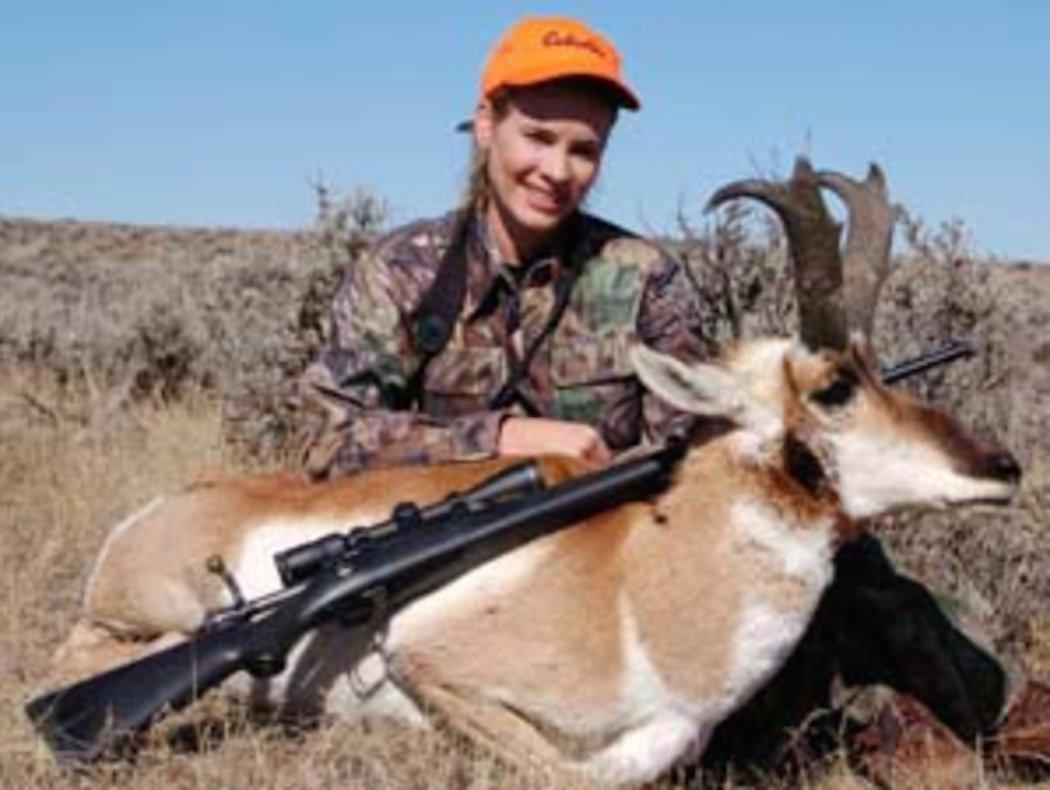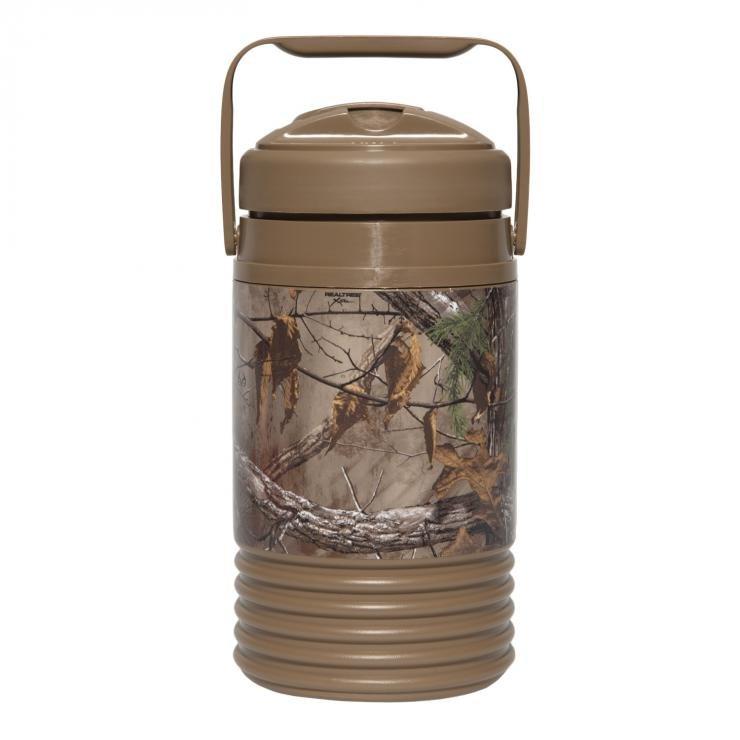Have You Ever Hunted Antelope?
I sat quietly in the back seat of the truck while David Draper, with Cabela's, and Ann Smith, online editor for NRA publications, talked about the upcoming pronghorn hunt. I had little to say as I couldn't take my eyes off of the landscape and the multitude of animals that my untrained eyes could barely pick out against the rocky terrain.
During our 45-minute drive from Casper, Wyoming, to the ranch house where several other writers and I would be hunting with Table Mountain Outfitters, I saw hundreds of antelope, numerous mule deer and so many jackrabbits that the ground looked alive. I was amazed at how such a sparse landscape, void of any plant life other than a little bit of brown grass, cactus and sagebrush, could support such an array of wildlife. I'd soon learn that the barren landscape is truly a testament to the rugged durability of the creatures that make a life out on the prairies.
No Place to Hide
We'll certainly have no problems locating a pronghorn out here, I thought as we continued our drive. With no trees, no mountains and very little of anything to block the pronghorns from our sight, picking one out should be no problem I assumed. But what I didn't fully appreciate at the time is that the flat landscape works against the hunter more than for him.

I had read prior to the hunt that the pronghorn is actually the fastest land mammal on the planet.
It can sprint up to 60 mph and can sustain a speed of 30 mph for miles.
People often give credit to the African cheetah for being the fastest, but it is only a sprinter that will tire out after a few hundred yards. No other land mammal can keep up with the pronghorn over a long distance. I was anxious to see the pronghorn in action, and when I finally did, its speedy performance surpassed my wildest expectations.
Stalking a Speedster
The morning after we arrived in camp, Ann and I climbed into the truck with outfitter Angie Denny and our guide Doug and headed out to one of the 40,000-acre ranches that Table Mountain Outfitters has permission to hunt. Our strategy, as Angie explained, would be to drive around the ranch until we spotted a good antelope buck through the binoculars. Then we'd get out and try to stalk within range of it before it noticed us.
Sounded easy enough, but as Angie continued to explain, If you can see a pronghorn through your binoculars, then it can see you. We must remain as low profile as possible.
As we drove across the ranch in search of a shooter, it seemed as if every pronghorn on the prairie had disappeared without a trace. After driving around for approximately 45 minutes, we spotted a small herd several hundred yards away. We stopped the truck, and glassed the game but the buck was too small for the taking. We continued this routine for another hour or so. I was constantly amazed at how quickly and easily Angie and Doug could pick out the brown antelope that were so perfectly camouflaged against the brown landscape. Each time they'd stop the truck and say, there's one, I'd strain my eyes in the direction that they were looking, but could see nothing. I eventually got the hang of it and was able to pick out the distant form of a pronghorn against the rock- and sagebrush-dotted terrain as well.
Igloo Legend 1/2 Gallon Water Bottle in Realtree Xtra
Finally, we heard the words we'd been waiting to hear. I see a shooter, Doug said. Who wants to go first?
Being a little bit nervous, I suggested that Ann go first. Apparently more excited than apprehensive, Ann grabbed her gun and jumped out of the truck. Angie and I stayed put as we watched the two hunker low to the ground in an effort to stalk up on the buck. Hunched over and moving only when the antelope lowered his head to feed, they stalked the buck until they were only 50 yards from it. I couldn't believe that they got so close to the pronghorn without being detected. From what I observed, I think the rutting buck was too interested in the does to the left of him to notice the hunters sneaking up from his right.
Ann steadied her gun on a pair of shooting sticks, looked through her scope and then took the shot. The buck fell right where he stood without even taking a step. She had made the perfect shot and took a nice pronghorn. A wide smile spoke volumes about the satisfaction she felt.
After admiring her buck, it was time to take pictures. Ann took a seat by the pronghorn's head, but before one snap could be made by the camera, she belted out a yell and quickly stood up. She had sat right on top of a cactus. After picking the stickers from her rear end, she selected a cactus-free spot and posed for the camera. I laughed at Ann's misfortune, but ended up being a victim of cactus butt myself later that day.
Going Long
The pressure was on. Ann had just pulled off the perfect stalk and shot, and I worried that I'd blunder when my turn came. We drove around for an hour until spotting another nice buck as it walked over a small hill several hundred yards away.
I got out of the truck and loaded my gun.
Stay right behind Doug, Angie told me. If you break the line, it makes it easier for the pronghorn to spot you.
We bent from the waste down and tried to stay as low to the ground as possible as we moved across the prairie toward the buck. To our dismay, the buck began quickly moving in the opposite direction. I had a very difficult time keeping up with Doug as he sprinted across the prairie while maintaining his low-profile stance. Finally, he held up a hand for me to stop and motioned for me to slouch even lower to the ground. The buck was approximately 260 yards away and looked like he might dart at any second.
Can you make this shot? Doug asked. I had never attempted such a long-distance shot on anything other than a paper target, but felt pretty confident after testing out my new Cabela's scope earlier that morning when sighting in my gun.
Yeah, I'll do my best, I responded. So I placed my gun on the shooting sticks and took aim. It was only then that I realized how badly I was shaking. I took a few deep breaths, steadied my aim and fired. The prairie goat dropped where it had stood. I was so relieved that I actually handed my gun to Doug and laid my head back against the ground in an effort to gain some composure. I had finally taken my first antelope, and I was thrilled to death about it.

By 10 a.m. on the first day, both Ann and I had taken our pronghorns. We called the other guides and found out that a couple of the other hunters had taken nice bucks as well, but several guys were still on the prowl.
We decided to catch up with freelance writer Tony Kinton to see how he was fairing. Tony and his guide had spotted a really nice pronghorn and were doing all they could do to sneak up on him. But, the buck had apparently not reached its large size for being stupid. The wise old pronghorn continued to evade Tony and his guide for the rest of the day. We were all amazed at how much ground he could cover between sightings. Finally, at last light, Tony was able to get within range of the buck and take it with his blackpowder gun.
When we returned to camp that evening, we were pleased to discover that every single one of the seven hunters in camp had harvested a pronghorn. We sat around dinner that night and discussed our hunts. Since several of us were first-timers, there were a few misses and miscalculations, but all in all everyone had an excellent time.
Table Mountain Outfitters
As professionals in the area of pursuing and harvesting trophy game animals, Table Mountain Outfitters (TMO) is a professionally licensed, full-time, family owned and operated outfitting business that has the hunter's best interest in mind. The folks at TMO take pride in their business and in providing a superior outdoor experience to guests. TMO offers antelope, black bear, buffalo, elk, cougar, mule deer, whitetail and turkey hunts.
Archery Antelope Hunts: TMO specializes in archery antelope hunts. From mid-August to mid-September the antelope hunting has proven to be spectacular. During the deluxe camp hunts, TMO provides hunters with outfitter wall-tents, a cook and professional guides. All your meat and trophy care is done for you. TMO enjoys a 90-100 percent success with a majority of animals harvested making Pope and Young. The rolling hills of Nebraska offer some of the most amazing trophies available in the West, all with available licensing. These hunts are conducted as cabin hunts with meals and lodging included.
For more information, call 307-632-6352, or check out www.tablemountainoutfitters.com.
Editor's note: This was originally published February 22, 2007.
Are you a big game hunter thirsty for knowledge? Check out our stories, videos and hard-hitting how-to's on big game hunting.








